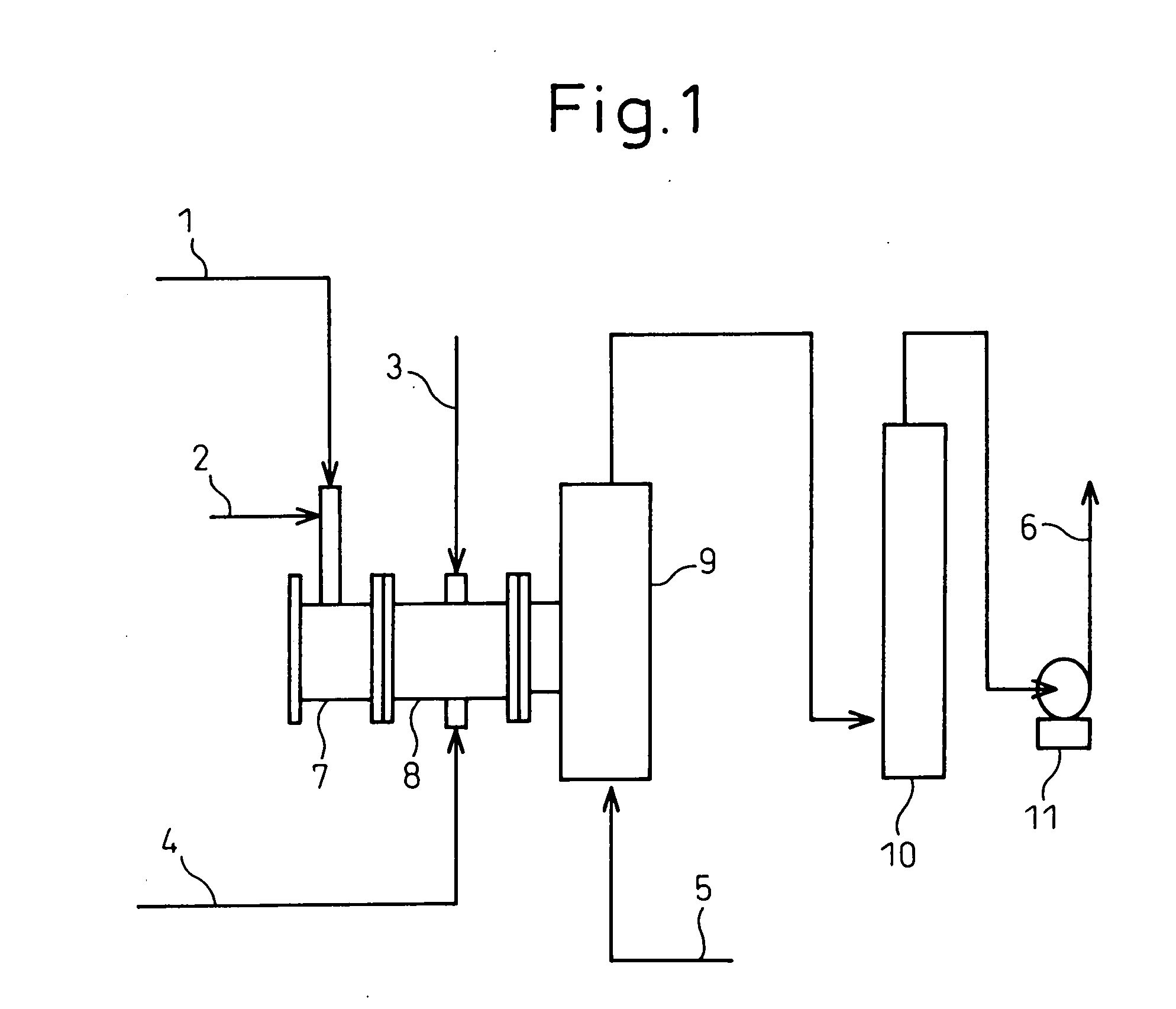Method for treating exhaust gas
a technology for exhaust gas and treatment process, which is applied in the direction of electrical equipment, fluid pressure measurement, casing/lining, etc., can solve the problems of large volume of gas used in fabrication processes, inability to directly emit into, and harmful gases, etc., to achieve safe and energy-saving effects
- Summary
- Abstract
- Description
- Claims
- Application Information
AI Technical Summary
Benefits of technology
Problems solved by technology
Method used
Image
Examples
example 1
[0044] The stainless steel combustion chamber of a combustion-type abatement system and the parts surrounding it were subjected to nickel plating and fluoride passivation treatment, and a combustion-abatement experiment was conducted using fluorine gas. The combustion-type abatement system operating conditions and fluorine introduction conditions are shown in Table 1, and the results of compositional analysis of the exhaust gas emitted after combustion and abatement are shown in Table 2. The combustion chamber temperature was measured with a thermocouple attached to the combustion chamber outer wall. The nitrogen monoxide and nitrogen dioxide concentrations in the exhaust gas after combustion were measured with a gas detector tube, and the hydrogen fluoride gas concentration was measured by infrared spectroscopy. The nitrogen trifluoride was measured using a detector. Sampling was performed with an aqueous potassium iodide solution, the fluorine gas concentration of the sample solut...
PUM
| Property | Measurement | Unit |
|---|---|---|
| temperature | aaaaa | aaaaa |
| flow rate | aaaaa | aaaaa |
| temperature | aaaaa | aaaaa |
Abstract
Description
Claims
Application Information
 Login to View More
Login to View More - R&D
- Intellectual Property
- Life Sciences
- Materials
- Tech Scout
- Unparalleled Data Quality
- Higher Quality Content
- 60% Fewer Hallucinations
Browse by: Latest US Patents, China's latest patents, Technical Efficacy Thesaurus, Application Domain, Technology Topic, Popular Technical Reports.
© 2025 PatSnap. All rights reserved.Legal|Privacy policy|Modern Slavery Act Transparency Statement|Sitemap|About US| Contact US: help@patsnap.com


